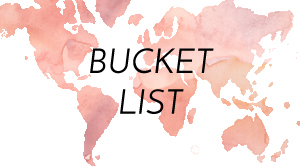Attending a CPR course is vital in learning how to save lives during emergencies. Whether you are a beginner or refreshing your skills, being well-prepared ensures you maximize your training session. This blog will outline six essential items you should bring to your cpr course Melbourne.
1. Identification And Documentation
It is important to bring the appropriate identification and any documentation that may be required when attending a CPR course. For the purpose of verifying your enrollment, this may include a government-issued identification document, such as a driver’s license or passport.
Because it is possible that certain classes will require evidence of registration or payment, it is beneficial to have a receipt or an email confirmation.
It is possible that you will be required to bring employment forms or previous certifications if the course is intended to prepare you for a job or certification. In order to avoid delays, it is important to double check what the course provider requires in advance.
2. Essential Course Materials
Although many cardiopulmonary resuscitation (CPR) classes offer materials such as manuals or training kits, it is a good idea to check ahead of time. During the session, you should bring a notebook and a pen so that you can jot down important notes.
Any pre-assigned readings or videos for the class should be completed, and any assignments that are required should be brought with you. Make sure you check with the provider to see if they require you to bring your own pocket mask or face shield for cardiopulmonary resuscitation (CPR).
3. Appropriate Clothing
Wear comfortable, loose-fitting clothing for a CPR course, as you will be practicing physical activities like chest compressions. Make sure that the clothes you wear allow you to kneel on the floor and that they are comfortable too.
During practice, the most effective footwear for providing stability is athletic footwear or shoes with flat soles. You should steer clear of clothing that is constricting or tight because it could restrict your movement.
If you dress appropriately, you will be able to concentrate on learning without experiencing any discomfort. For the duration of the session, you should bring a lightweight jacket with you if the location of the course is in a cooler environment.
4. Personal Health And Safety Items
For personal safety, bring items like hand sanitizer or disinfectant wipes, especially if you are practicing CPR on shared manikins. It is recommended that you bring your own disposable gloves just in case, even though some classes provide gloves for participants.
Medications, such as an inhaler or an EpiPen, should be carried with you so that you can meet your specific medical requirements.
You will be able to concentrate on learning cardiopulmonary resuscitation (CPR) better if you pay attention to your health and hygiene. Also, if you are recovering from illness, it is better to reschedule for when you are feeling your best.
5. Hydration And Snacks
Because cardiopulmonary resuscitation (CPR) classes can be quite lengthy, it is essential to maintain proper hydration and energy levels. During the course of the session, you should bring a water bottle that can be reused.
Pack light snacks like granola bars or fruit for quick energy during breaks. Avoid heavy or messy snacks that might disrupt the class.
Keeping yourself hydrated and nourished ensures you can stay focused and participate fully. Be mindful of any classroom rules about food or drinks and clean up after yourself to maintain a respectful environment.
6. Additional Items
If you want to keep all of your belongings organized, you might want to think about bringing a small bag or backpack with you. You should bring a spare pair of glasses or contacts with you in case you experience any discomfort while you are participating in the course.
A portable phone charger is handy if the session runs long, especially if you need your phone for course materials or communication. One last thing to remember is to bring a positive attitude and a willingness to learn. While it is a serious skill, CPR training can also be an engaging and rewarding experience.
Maximize The Learning Experience During A CPR Course
Being well-prepared for your CPR course ensures you gain the most from your training and feel confident applying your skills when it matters most. By bringing the right materials and adopting a proactive mindset, you can make the experience smooth and effective. Take the time to prepare thoroughly, and you will leave the course equipped to handle emergencies with confidence.







